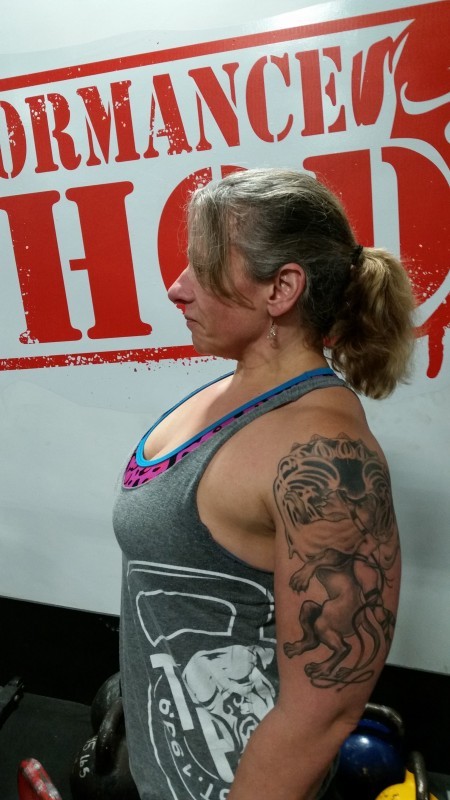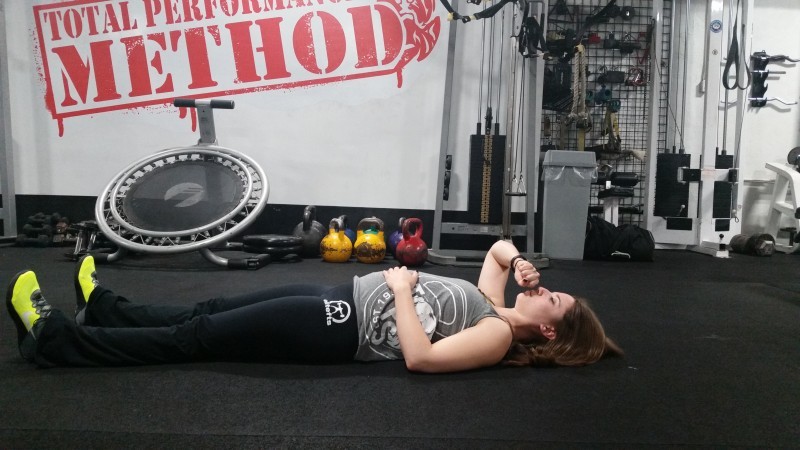
So, you want a big squat, bench and pull? Are you taking big air? We hear this all the time in the gym, right?
Air!
Belly!
Breathe!
Big Air!
Go into any powerlifting gym and you’ll hear people yelling this as a heavy lift is attempted. Do you know what this means or how to do it? You might. You might not.
I’ve seen veteran lifters with huge totals that didn’t fully understand this. What I am talking about here is bracing your midsection before a lift. We must do this to effectively transfer power through our bodies into the bar. Just strapping on a belt will not do the trick.
We must learn to breathe low into our bellies and then push the muscles out so that the abdominal wall can brace the spine. Adding in a belt makes this even better as we can now push into the belt for increased tension. Increased tension equals increased poundage.
RELATED: Are You Getting Enough O2? — Oxygen's Role in Muscle Growth
I read in a book somewhere that the human body will breathe as it needs to until intervened on by a trained professional. I couldn’t agree more. For the most part. When coaching people on how to take air and brace, I like to use cues that are as simple as possible to make it easy to understand. Let’s illustrate it like this:
If your car was stuck in snow and you had to push it out, would you:
A: Draw a deep breath into your chest and then suck your abs in and up as many “experts” on the interwebs say to do?
OR
B: Would you suck a huge breath into your gut and then strain as hard as you can while you push?
If you said A, call a tow truck because your car is staying stuck. This is a prime example of the body doing what it needs to do. This gets lost in the gym.
Let’s review how to take air into the belly for bigger lifts.
First, stand up either in front of a mirror or with a friend watching, and take a deep breathe, as deep as you can and try to get it low in the belly below the belly button. If your chest raised you did it wrong.
As you can see, the chest is high. This is wrong. She took air into the chest as opposed to the belly.
This is normal. In today’s society we all tend to breathe into our chests and this causes lots of tension in the traps and upper back. Try again and really focus on breathing into the belly. Did your belly push out?
Here the chest is low and the belly is pushed out. This is much better.
If this did not work for you, try this: stand tall and place your fingertips on your belly just below your belly button.
Push your gut out against your fingertips and then open your mouth wide and suck air through your mouth into your lower abdomen and push into your fingers harder as you do.
Cheryl smashed a double bodyweight deadlift at 47 years old after getting this tip mastered. 300 pounds, baby!
Once all the air is in there, tuck your bottom rib down and lift your pelvic floor.
What?
That’s fancy trainer talk. There is no classy way to describe lifting the pelvic floor so here goes: We all know what it feels like to have to go potty really bad right? We all should know how to hold it as well so we don’t have accidents. That is lifting the pelvic floor.
As you push the abs out against your fingertips and tuck your ribs down, hold “it” in hard. Hold for a solid 3/1000 count. You should now feel incredibly tight and like you can hit a 50 pound squat PR.
If you feel like your head is going to explode, keep practicing. You have the air too high in your belly. Try again and push that air down. Push your belly button down. Now, hold “it” for a 3/1000 count.
RECENT: Murph's Top 10 Exercises With The Biggest Carry Over
Did your head pop off? No? Good.
There are several more drills you can use to assist in mastering this. Here is one we teach all personal training clients and lifters on Day 1. This is beginner stuff. It’s Day 1 stuff. Sadly, it is news to many lifters. I hope it helps all of you lift more.
You first need to know how to take air into the belly, sides, and back, and then push out in all directions. In order to move the most weight, we need to create a big base and a stable base to lift from, right? This is part of the foundation. Think about a pyramid. A pyramid is fat on the bottom and small at the top. It is stable. If we took the pyramid and tipped it upside down it wouldn’t be very stable or big. Making your stance big is the topic for another article; for now I am going to address stability, and more specifically a drill to create more stability by learning to breathe.
Try following this step-by-step:
Step 1: Lie on the floor. Pretty simple.
Step 2: Put one hand on your belly and make a fist with the other and keep it near your mouth.
Step 3: Push your belly out against your hand hard.
Step 4: Open your mouth and suck as much air into your belly as you can. Think that you were going to take in air and make a big burp like a little kid, or Rhodes would do.
Step 5: Hold that air and try to push your lower back into the ground, push your sides out and push your belly out as hard as you can while holding the air.
Step 6: Take the hand you made a fist with and press it against your mouth lightly, and then begin to slowly exhale as hard and slow as you can against the closed fist. You should hear a hissing noise coming out from your mouth against your hand.
Step 7: Slowly drive your ribs down to your hips as you curl up into a crunch as you continue to breathe out. Keep your back pressed against the floor and keep pushing your abs out and sides out. Try to exhale for at least a 5/1000 count. Do not inhale!
Step 8: When you think you have all of the air expelled, breathe out harder. Hold the last portion for a 3/1000 count and then inhale as you lower your body to the floor. If you did it right, you should be a little light headed and you will probably cough.
Step 9: Repeat four more times for a total of five breaths.
This drill will do a few things:
- It will teach you to breathe and brace as you push the abs/sides/back out.
- It will help to relieve tension and actually relax you. This is good because you don’t want to be stressed before training. You do need to get a little jacked up for the big sets, but you do not want to be stressed.
I suggest that you go through your normal warm-up procedure at this point. Hopefully you will find this better prepares you for training and helps you to brace harder so you can lift more weight right now.


















3 Comments